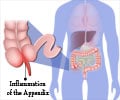Surgical trauma 1: The systemic immune response to trauma: an overview of pathophysiology and treatment – by Professor Janet M Lord et al

Trauma evokes a systemic reaction that includes an acute, non-specific, immune response that's associated, paradoxically, with reduced resistance to infection. The result is damage to multiple organs caused by inflammation that's aggravated by subsequent sepsis to which the body has become susceptible. This Series examines the biological mechanisms and clinical implications of the cascade of events caused by large-scale trauma that leads to multiorgan failure and death, despite the stemming of blood loss. Furthermore, the stark and robust epidemiological finding—namely, that age has a profound influence on the chances of surviving trauma irrespective of the nature and severity of the injury—is explored. Advances in our understanding of the inflammatory response to trauma, the impact of ageing on this response, and how this information has led to new and emerging treatments aimed at combating immune dysregulation and reduced immunity after injury, are also discussed.
Surgical trauma 2: Postinjury abdominal compartment syndrome: from recognition to prevention – by Professor Zsolt J Balogh et al
Postinjury abdominal compartment syndrome (ACS) is an example of a once deadly clinical occurrence that was eliminated by strategic research and focused preventions. In the 1990s, the syndrome emerged with the widespread use of damage control surgery and aggressive resuscitation techniques. Patients who previously bled to death on the operating table made it to intensive care units, but then developed highly lethal respiratory, renal, and cardiac failure due to increased abdominal pressure. Among many factors, delayed haemorrhage control and excessive use of resuscitation were identified as modifiable predictors. The effect of preventive strategies, including challenging the 40-year-old standard of large volume crystalloid resuscitation[1] for traumatic shock, greatly reduced cases of ACS. The discoveries were rapidly translated to civilian and military trauma surgical practices and fundamentally changed the way trauma patients are resuscitated today with substantially improved outcomes.
Source-Eurekalert










